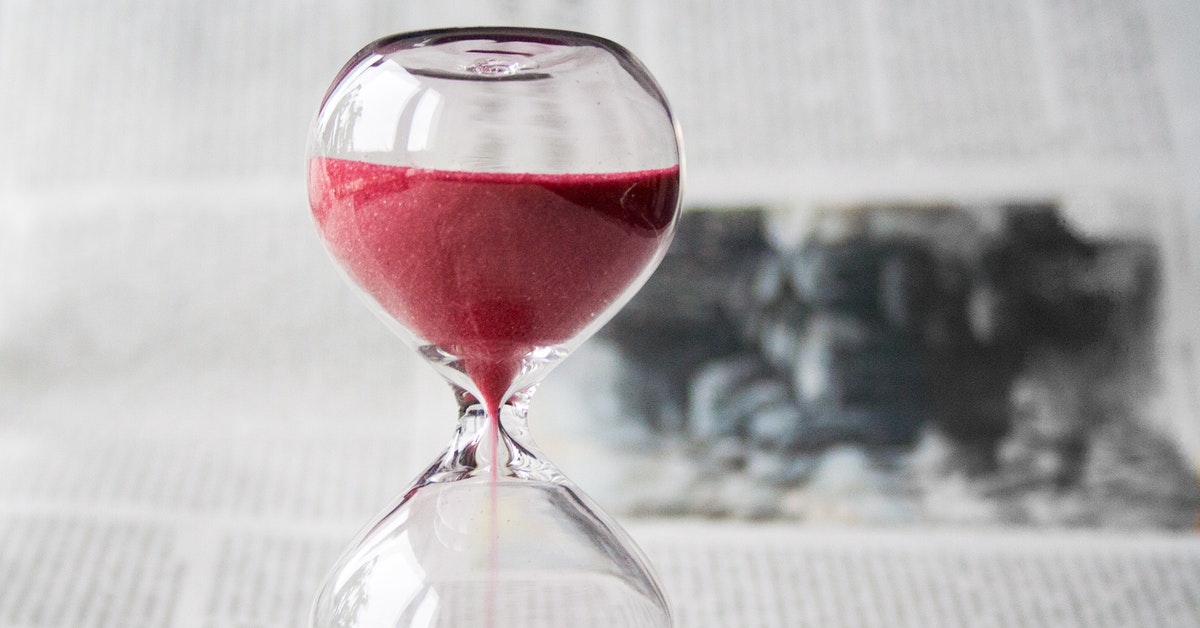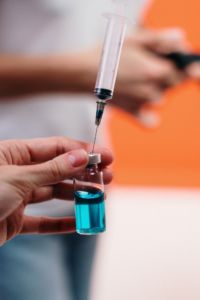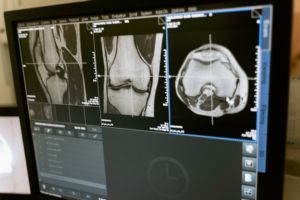
Cortisone shots can greatly improve the quality of life for those struggling with chronic pain, but they don’t last forever. The time a cortisone shot works can depend on the person, and the area injected. Many patients have concerns about how long a cortisone shot will stay in their system and how many shots they can safely have. We’ve created this article to answer some of these common questions.

How Does Cortisone Work?
Cortisone is a natural type of steroid that your body produces in response to stress and pain. It reduces inflammation–one of the key causes of pain. When a joint is injured and pain is chronic, the human body can’t produce enough of its own steroids to keep you pain-free. Injecting cortisone into the sore joint reduces the inflammation, relieves pain, and can improve range of motion.
When used to treat joint problems like knee or hip pain, cortisone is injected into the joint. Your healthcare provider may use an x-ray or ultrasound to help them aim the shot correctly. Cortisone injections into joints typically don’t cause side effects in other body systems, such as the stomach upset that is common with oral steroids. They can cause some local side effects like temporary pain or swelling. Some people experience more pain than usual for a day or two after the cortisone injection. This common side-effect is known as a cortisone flare, it is not dangerous and shouldn’t last more than forty-eight hours.
The amount of inflammation the cortisone has to tackle will effect how long it takes for you to feel relief after an injection. On average it takes about 5 days but for some people it can take up to three weeks. In the latter case, your provider may recommend a second injection. Often, this second shot is enough to overcome the inflammation and relieve pain.
What Kinds of Injuries are NOT helped by Cortisone?
Since cortisone’s function is to reduce inflammation, pain that is not primarily caused by inflammation won’t respond to cortisone. Advanced arthritis that presents as “bone on bone,” meaning an almost complete lack of cartilage in the joint, does not typically respond to cortisone injections.
If you don’t feel any relief from a cortisone injection or if the effect is very short-lived, less than a few weeks, your provider may wish to try a different treatment. Arthritis patients may find that cortisone shots work well for many years but stop working as their disease progresses. Again, this is a sign that it’s time to try something else.
How long does a Cortisone Injection Last?
Relief from a cortisone injection can begin anytime within a few days to a few weeks after you receive your injection. After you begin to feel relief, it should last for between four and six weeks.
Some types of acute injuries may heal in that time, and your pain will be gone, and stay gone, once the cortisone wears off. Chronic conditions like arthritis of the hip or knee will require repeated treatments.
Following your provider’s instructions after receiving a cortisone shot can help it to work more effectively. Healthcare providers usually recommend that patients rest the affected joint for about a week following the injection. “Resting” doesn’t have to mean staying in bed, but it may mean sitting more than usual or being generally less active.
The kind of cortisone injections your provider uses can also affect how long you feel relief. There are short and long-acting preparations of cortisone. Ask your provider which you are receiving and what you should expect. Let them know if you’d like to make a change.
How Many Injections Can I Receive?
How many injections you can safely receive and how often you can receive them will depend on the condition and the area being treated. An arthritic knee can receive injections every few months for as long as they are effective. Some other areas may need to be treated less frequently or only for a short period of time. Some patients will need a second injection a few weeks after their first in order to overcome the inflammation and relieve their pain. If the second shot does not work, your provider will probably recommend a different treatment. If it does work your provider will let you know when you can receive your next shot and how many more you can have within a year’s time.
Cortisone injections are generally safe, but there are some rare side effects. These side effects are more common when cortisone is used more often than three or four times a year in one joint. These side effects include weakening of tendons in the treated area and reduced blood flow to the bone in the treated area. Your healthcare provider will monitor you for these side effects and reduce the frequency of your treatments if needed. When cortisone is not overused, these side effects are rare.
What If I’m in Pain Between Injections?
Cortisone shots are very effective for joint and back pain, but sometimes they wear off before a patient can safely receive another. This can be frustrating, but there are things you can do to make yourself more comfortable.
Hot and cold therapies and over-the-counter pain relievers like ibuprofen can reduce pain and swelling while you wait for your next shot. Ask your provider how to use these methods safely and effectively. If you are diabetic or suffer from peripheral neuropathy, you should not use hot and cold therapy without a doctor’s guidance.
If you have water around your joint, your healthcare provider can drain it. This often leads to significant pain relief. Lifestyle changes like losing weight and being more active can also reduce joint pain and stiffness. Some patients also find that supplements like fish oil or turmeric can reduce their pain. Your healthcare provider can recommend the best treatments for your condition.
Our providers in Houston administer cortisone shots and work with our chiropractors to help you navigate all your treatment options. We believe in treating the whole person to achieve holistic healing and pain relief.





